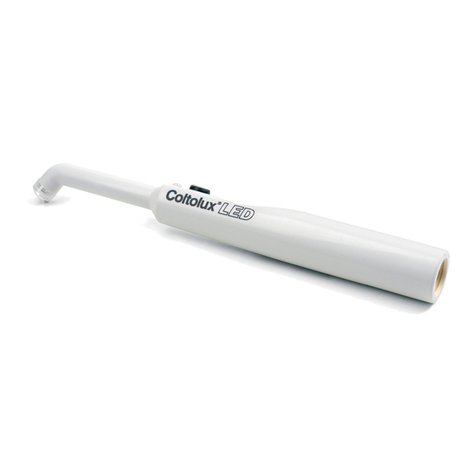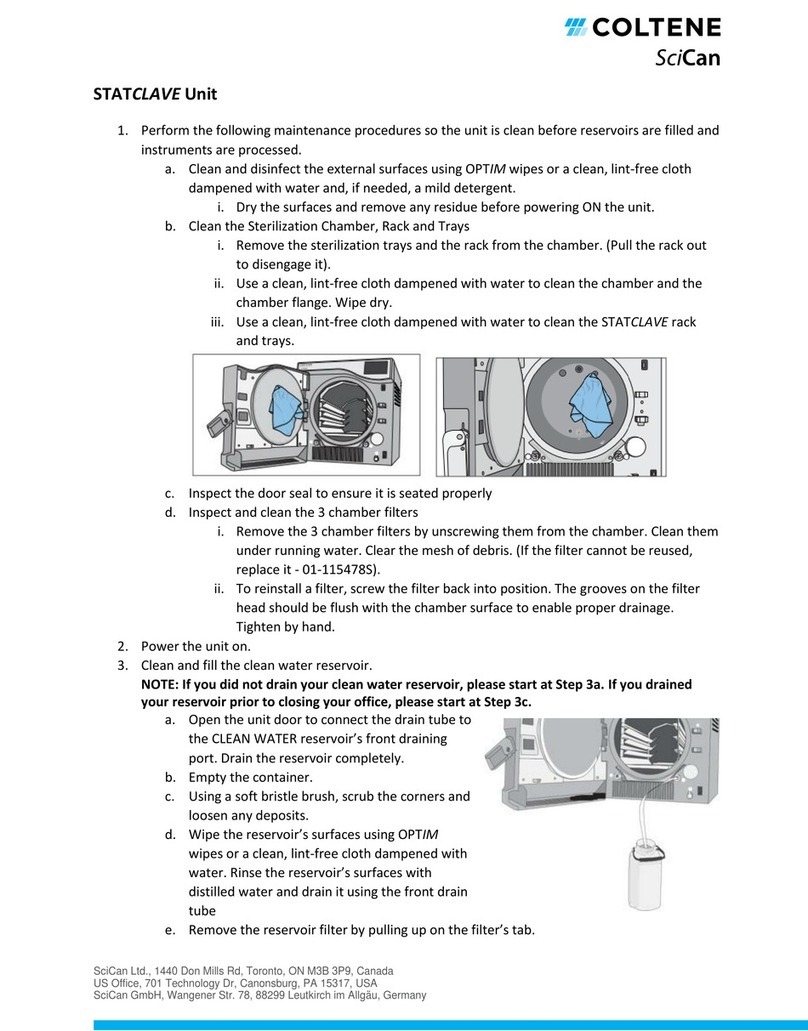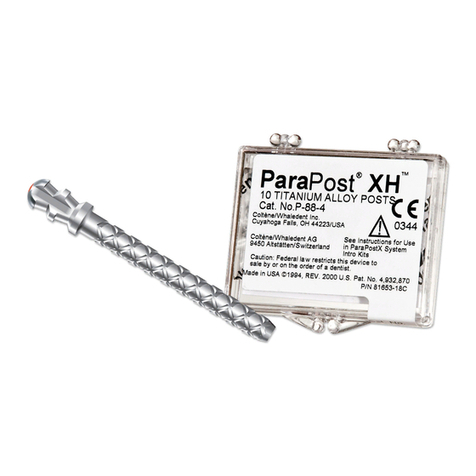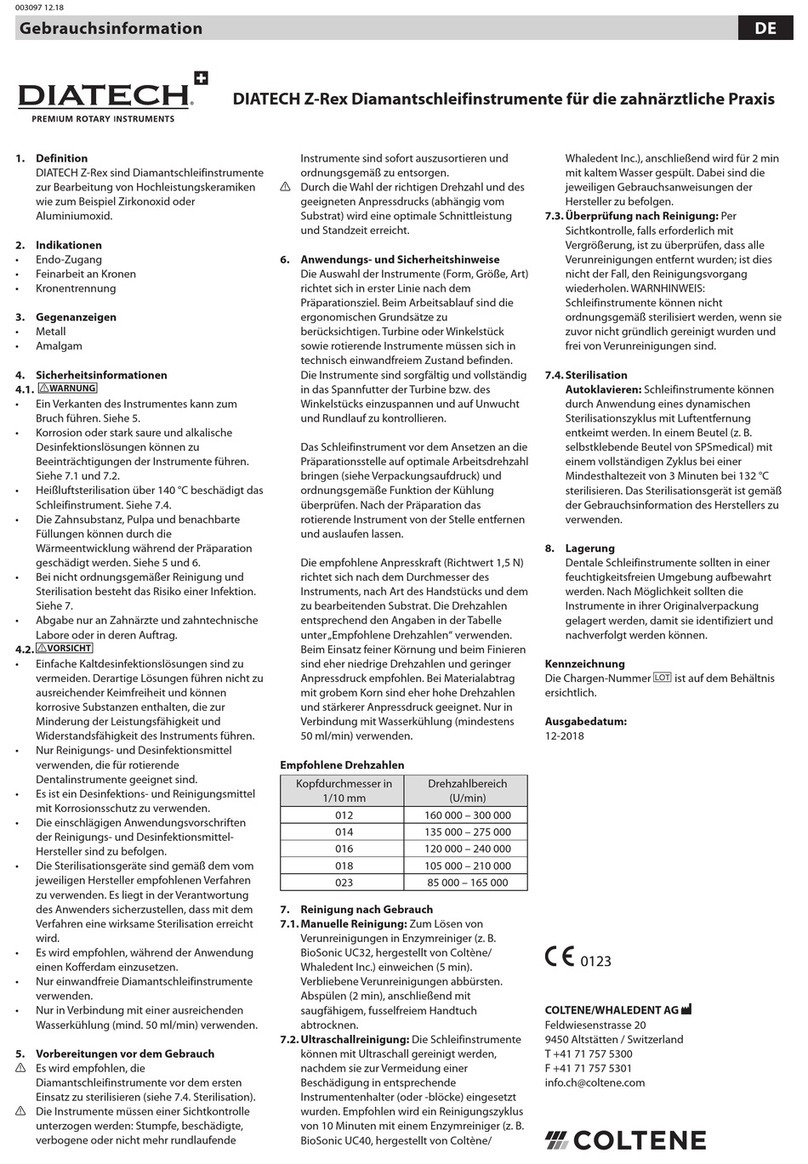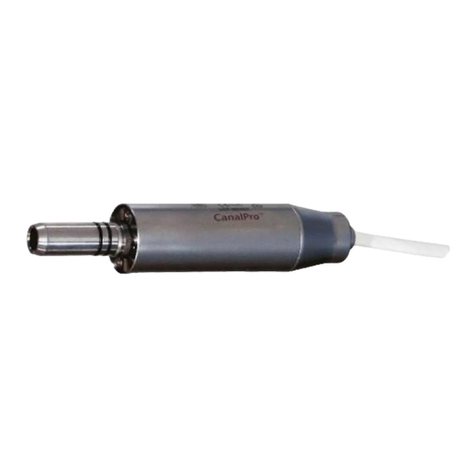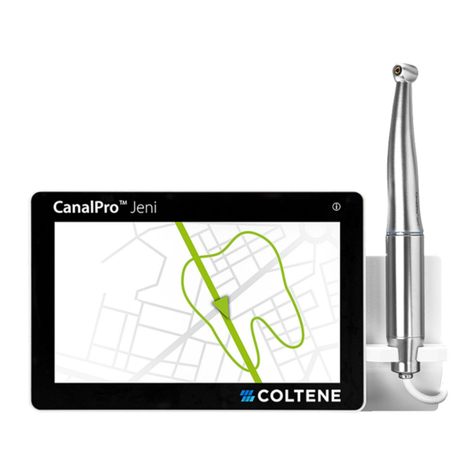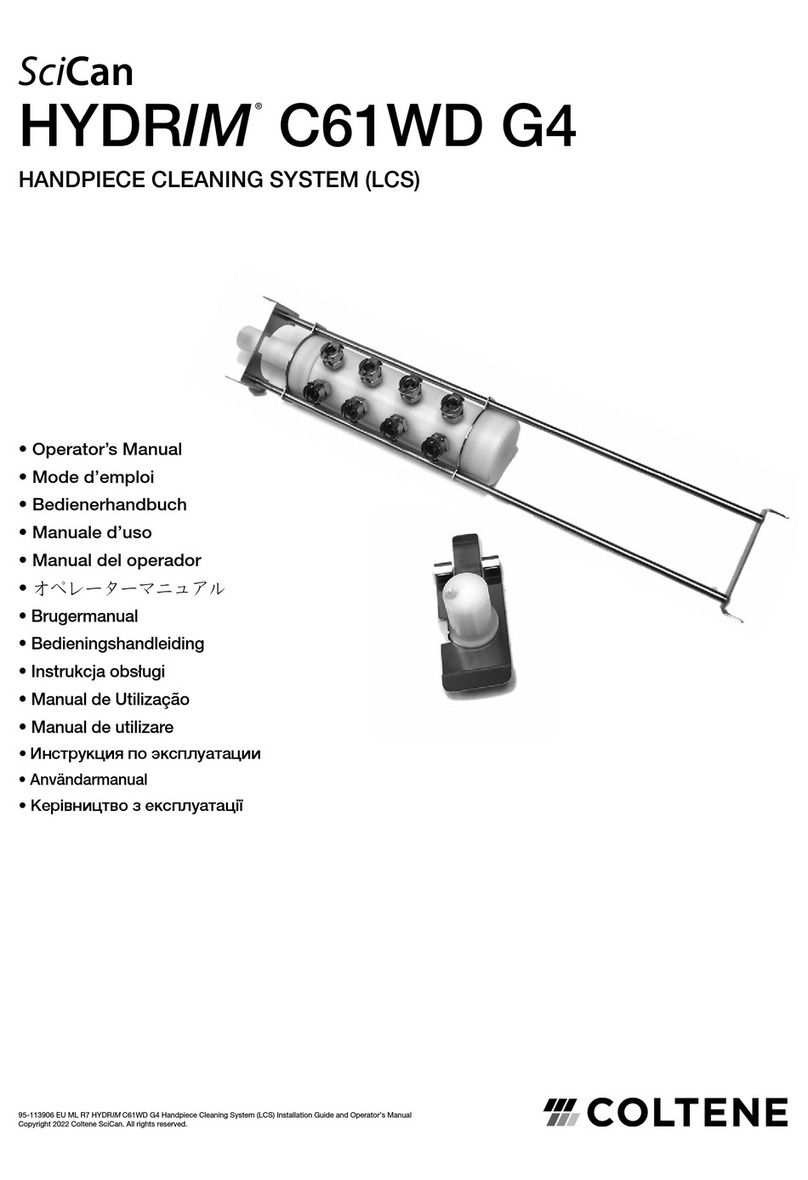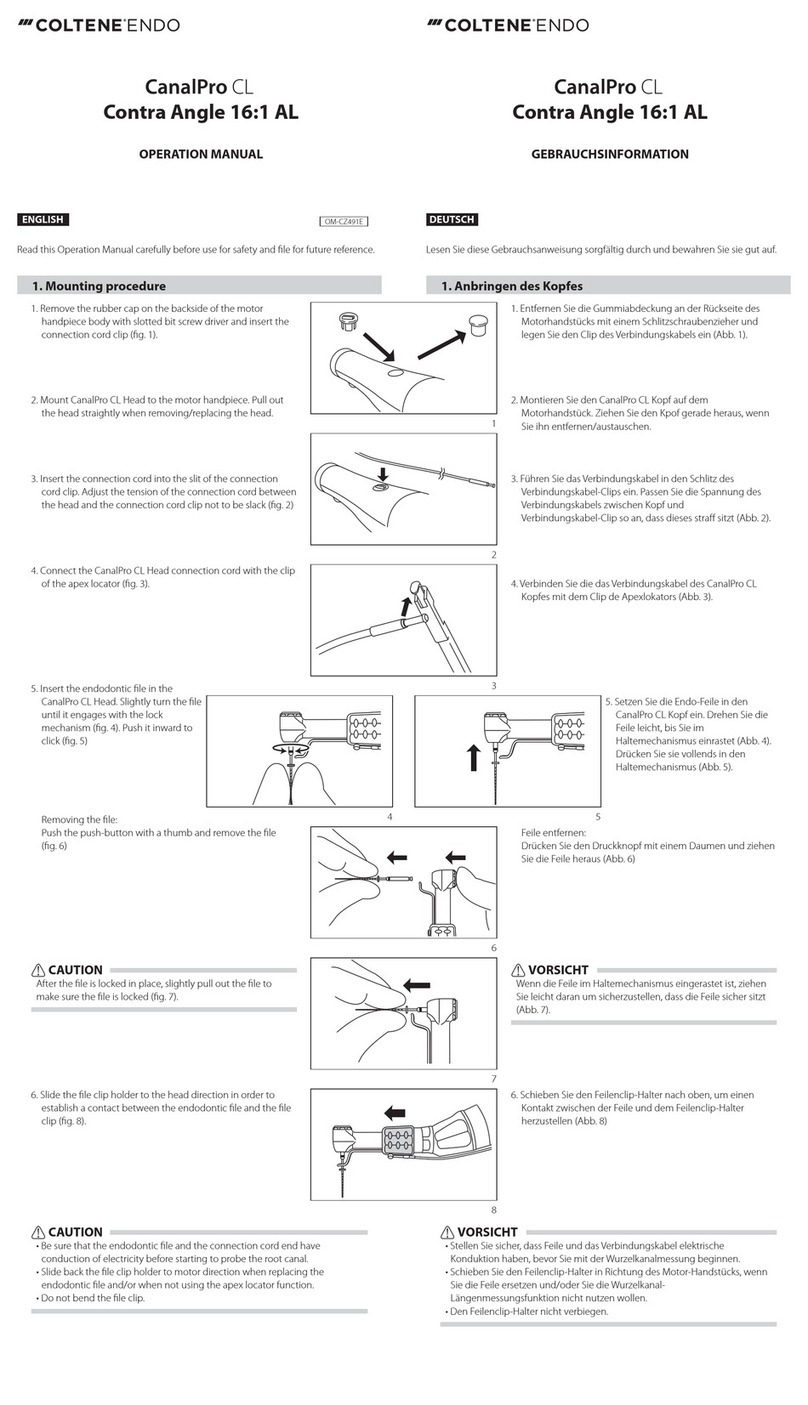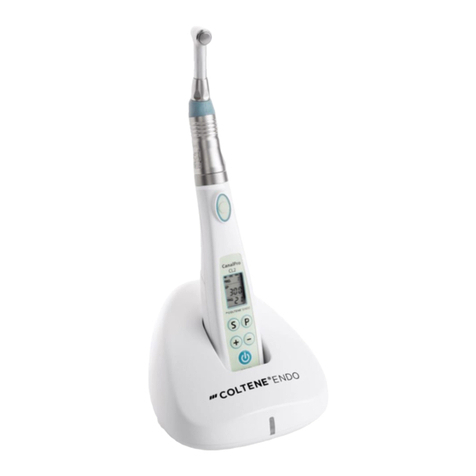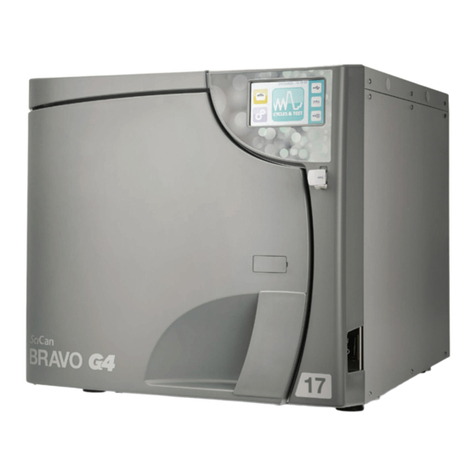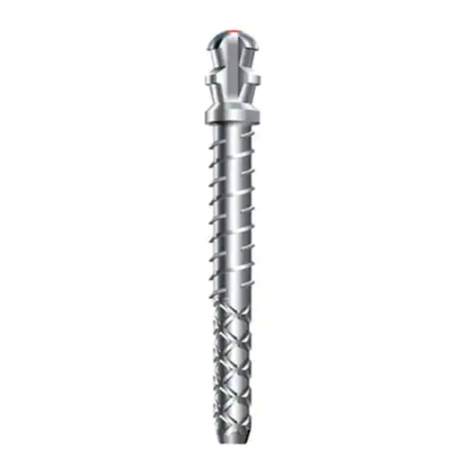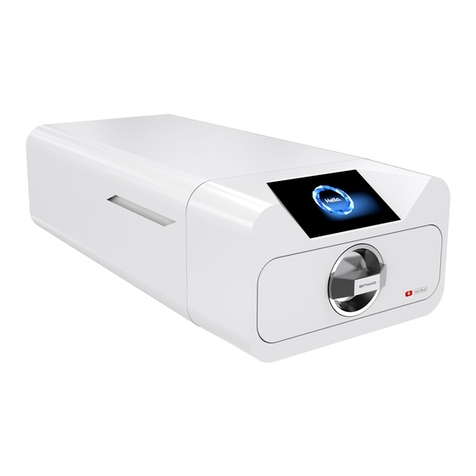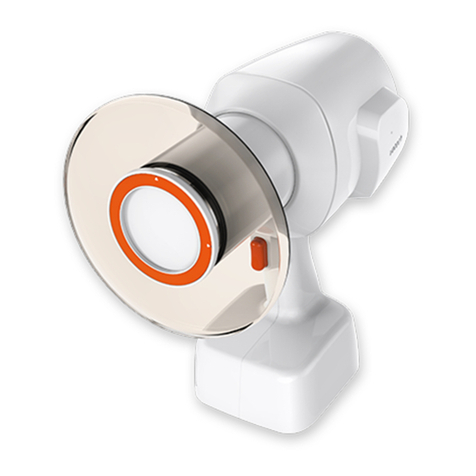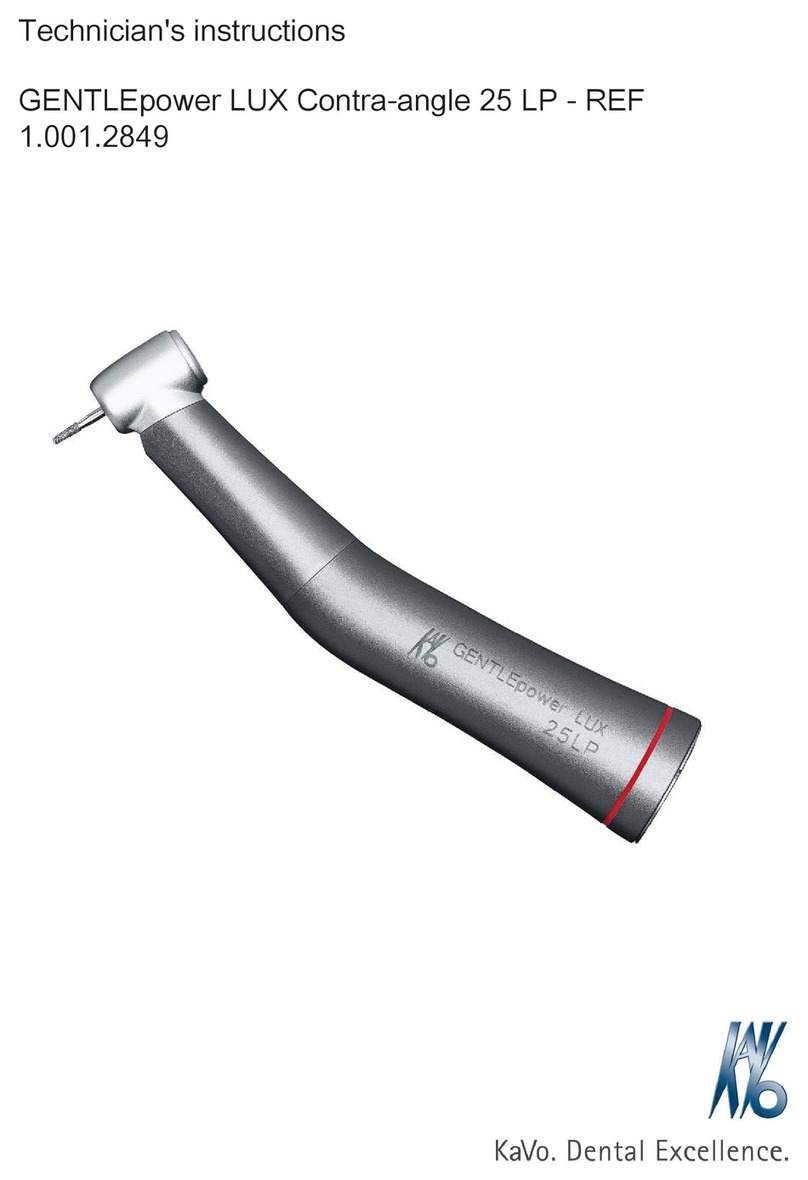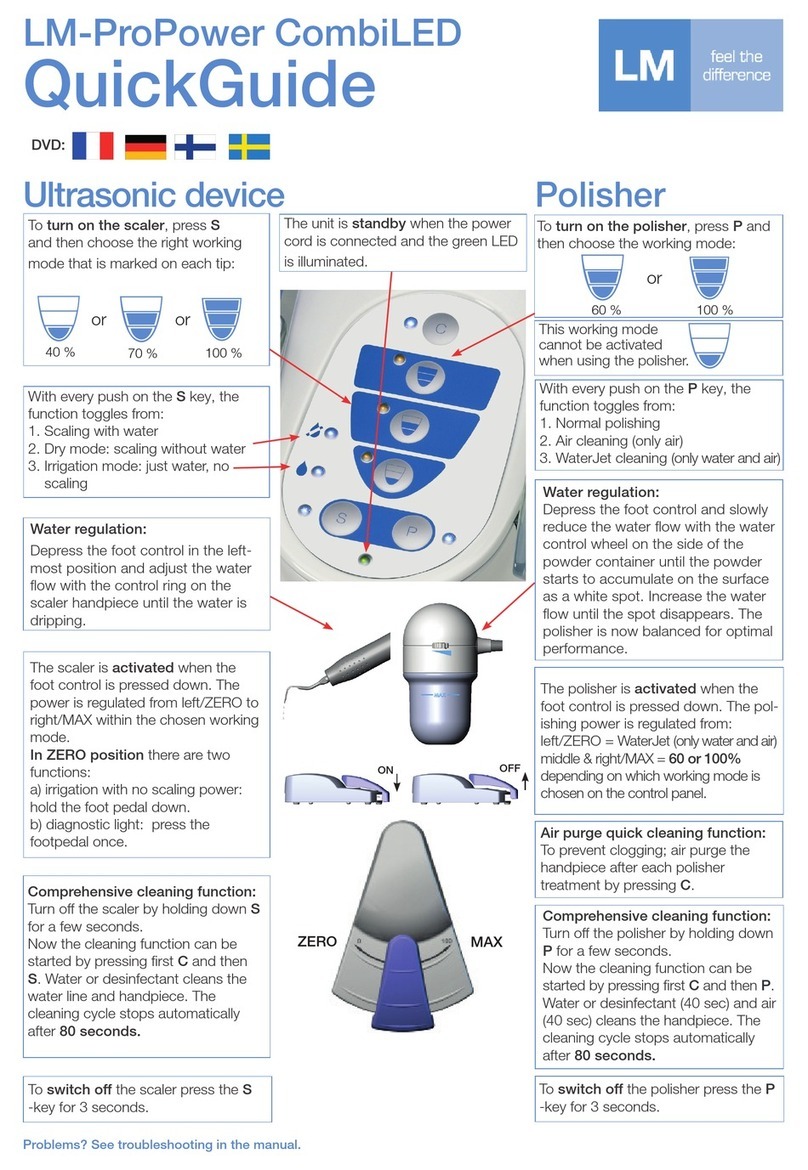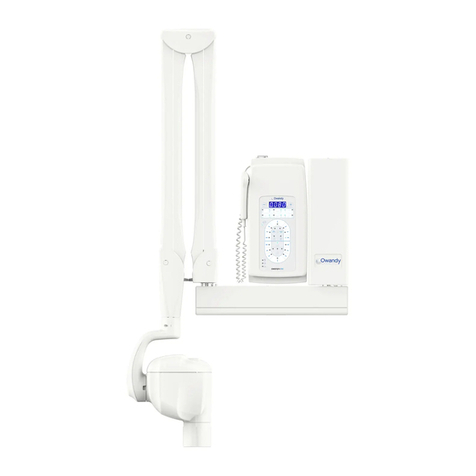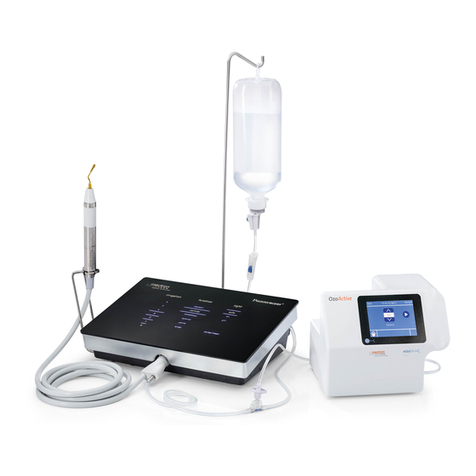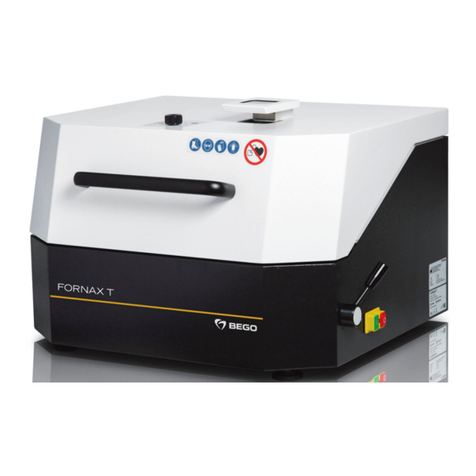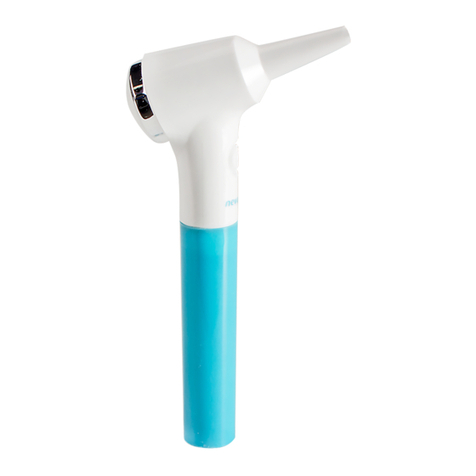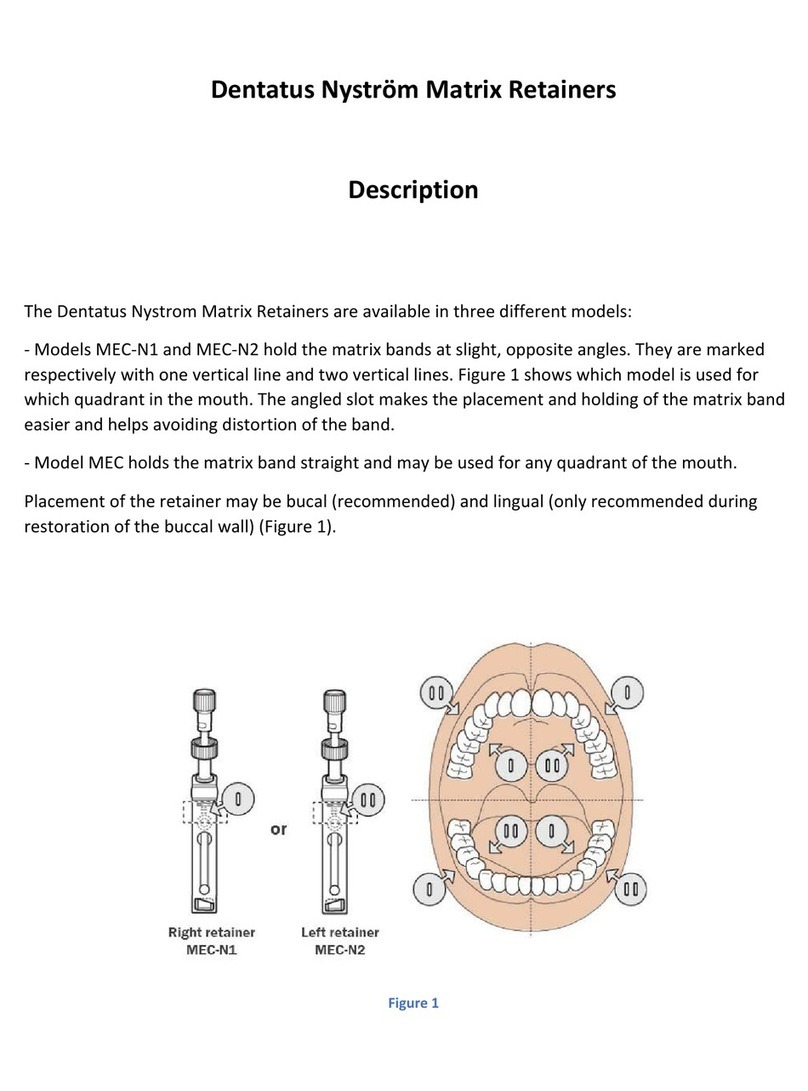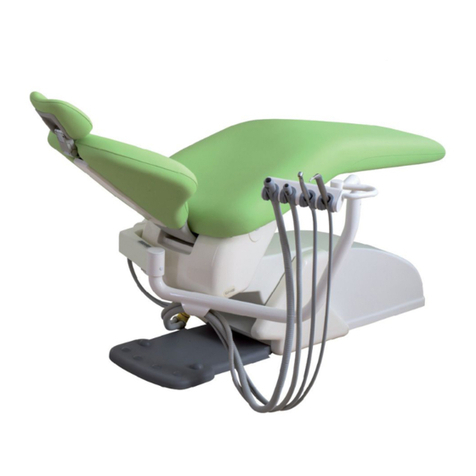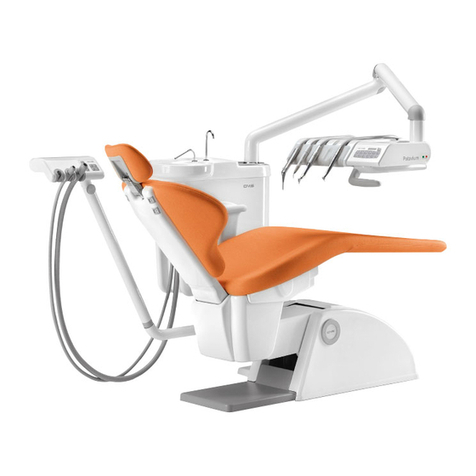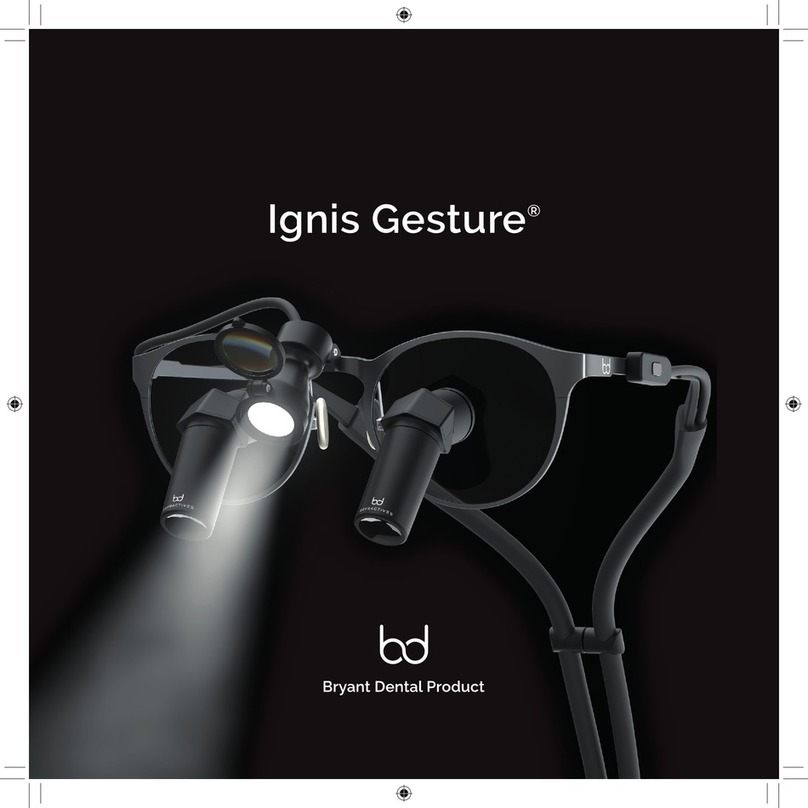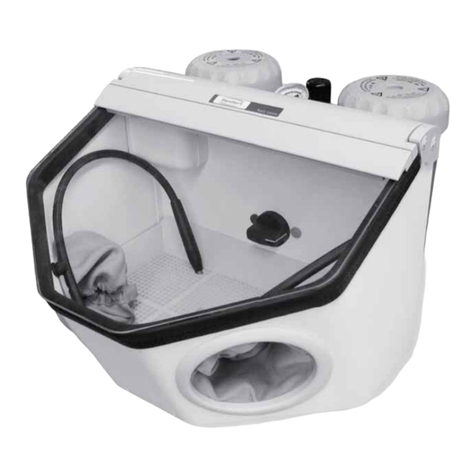
4 Owner’s Guide
IV. FUNCTION CHECK
A. Activate/Deactivate Light
Depressing the On/O button on the handpiece activates or
deactivates the curing light (Fig. 1c). Do not hold the button
continuously throughout the curing cycle. During operation an
audible beep will be emitted every 10seconds. The unit shuts
o automatically after 20seconds.
B. Measuring the Light’s Eectiveness
To ensure complete polymerization at all times, it is critical to
periodically test the light intensity output.
C. Radiometer Display
A reading of 300mW/cm2or higher indicates that the light
output is acceptable for the polymerization of material up to
a 2.0mm depth. Follow the dental material manufacturer’s
instructions for recommended exposure time, and check using
the supplied test block. A reading below 300mW/cm2, or a
reduction of intensity of the light output in comparison to the
original value, indicates that corrective action should be taken.
(See Section VII, D Troubleshooting.)
V. INDICATORS
A. Ready Mode
When the unit is charged and ready for use the handpiece
indicator will light green.
B. Sleep Mode
If the handpiece is left out of the charger base for more than
15minutes the unit will enter sleep mode. During sleep mode
the handpiece indicator light will not be lit. Activating the unit
or placing the unit into the charger base will wake it from sleep
mode. If the indicator light is not lit, and the unit does not
respond to On/O button presses, the battery may need to be
charged. Place the unit into the charger base and check that
the charger base indicator light turns orange. If the light does
not turn orange see section VII. Troubleshooting.
C. Thermal Protection Mode
WARNING
The red indicator light on the handpiece indi-
cates the unit has entered thermal protection
mode. Action must be taken to allow the unit
to cool.
The Coltolux®LED incorporates thermal protection circuitry de-
signed to inactivate the unit if operating temperatures become
too high. If this happens, the handpiece indicator light will turn
red until the unit cools. Once the handpiece has suciently
cooled (approximately 10minutes) the indicator light will return
to green indicating the unit is ready for use. If the indicator light
does not return to green within 20minutes contact your dealer
or Coltène/Whaledent Inc. for service.
If a problem with the unit is suspected, the following functio-
nality test should be used to determine if there is an issue with
your Coltolux®LED Curing Light:
1. Fully charge the unit.
2. Activate the unit allowing it to complete the entire 20se-
cond cycle.
3. Repeat step 2immediately. Continue until the unit will no
longer activate.
The unit should be able to perform a minimum of 18complete
twenty-second cycles before it enters thermal protection mode.
If this is the case, the unit is operating as designed and meets
Coltène/Whaledent Inc.’s test specifications.
To reinforce confidence in the LED’s operation, always test
restorative materials utilizing the provided Test Block. Only by
testing materials with the test block can true depth of cure and
necessary curing times be determined.
D. Low Battery
When the unit’s battery has reached a low level the handpiece
indicator light will blink green. The unit may still activate once
it has reached the low battery state, however, few activation
cycles remain and it is recommended the unit is placed on the
charger to fully recharge the battery.
If the unit detects a low battery condition while in thermal pro-
tection mode the handpiece indicator will blink red. Once the
unit has suciently cooled the indicator may return to blinking
green and, depending on remaining battery charge, the unit
may still activate, however, few activation cycles remain and
it is recommended the unit is placed on the charger to fully
recharge the battery.
E. Fault Mode
If a fault is detected by the unit the handpiece indicator will turn
solid orange and activating the unit will result in an error sound.
See section VII. Troubleshooting.
VI. CLINICAL APPLICATION
WARNING
Always test restorative materials with this
LED light by using the supplied test block.
Failure to do so may result in uncured ma-
terial.
• Polymerization: Determine the exposure time in accordance
with the dental material manufacturer’s instructions using
the test block provided.
• Remove the charged handpiece from the charger base; po-
sition the light shield; slide the barrier sleeve over the light;
attach the light shield; direct the tip of the light lens as close
to the restorative material as possible without touching.
• Activate Coltolux®LED with a momentary push of the
button. Avoid contact with un-polymerized restorative ma-
terial, glass ionomer, liquid resin or bonding agent because
direct contact will cause these materials to adhere to the
light lens. This will block the light transmission and result in
improper polymerization.
VII. TROUBLESHOOTING
A. If the light on the charger base does not illuminate:
• Check to see that the power cord is securely plugged into
the charger base and the wall outlet.
• Ensure the wall outlet has power by plugging a lamp into it.
B. If the On/O button on the handpiece does not activate the
blue LED curing light and the green light on the handpiece is
not lit (and handpiece is not in base):
• The unit may be discharged and needs charging. Replace
handpiece in the charger base. If the charger base LED is
orange, handpiece is being charged. If the charger base
